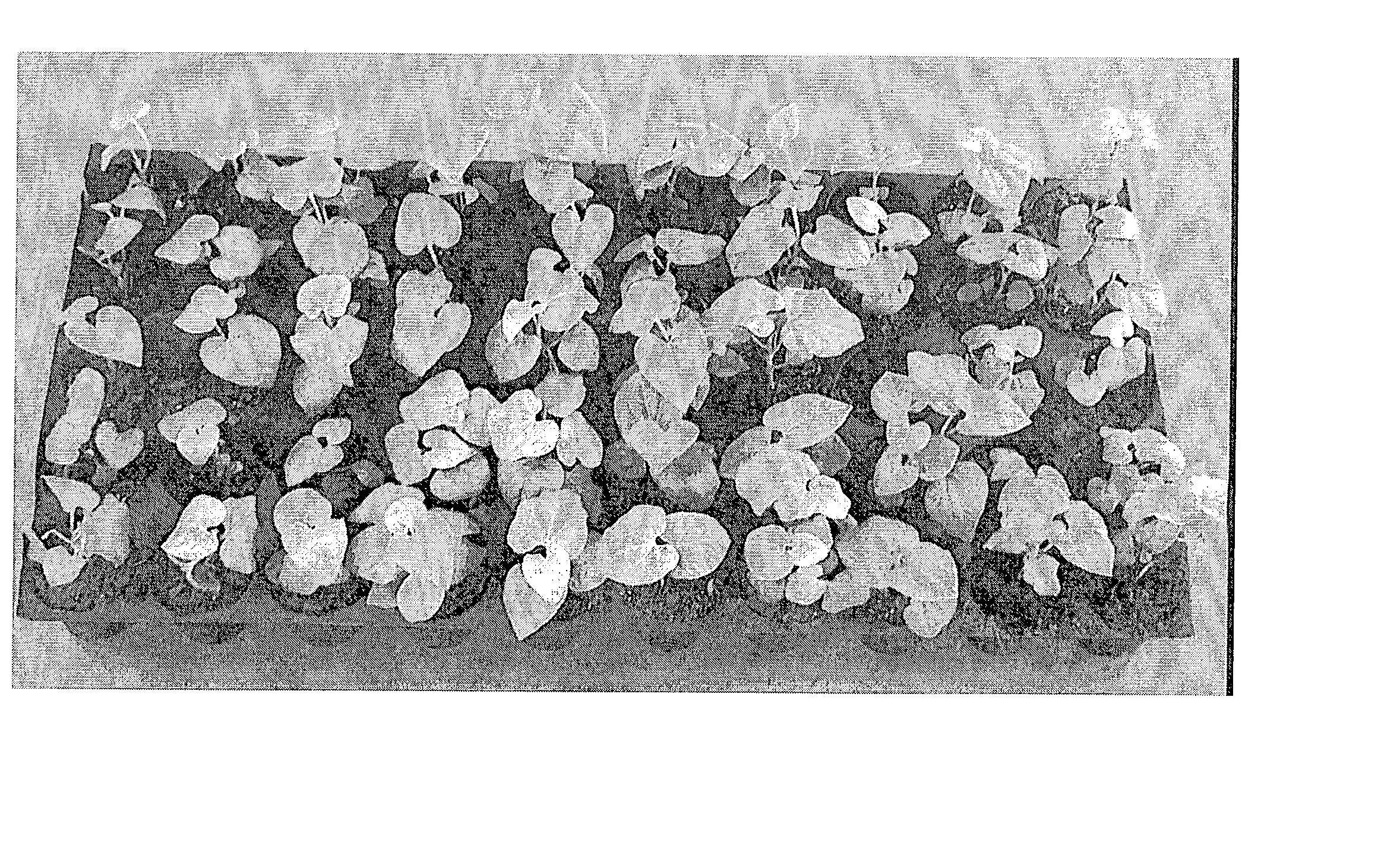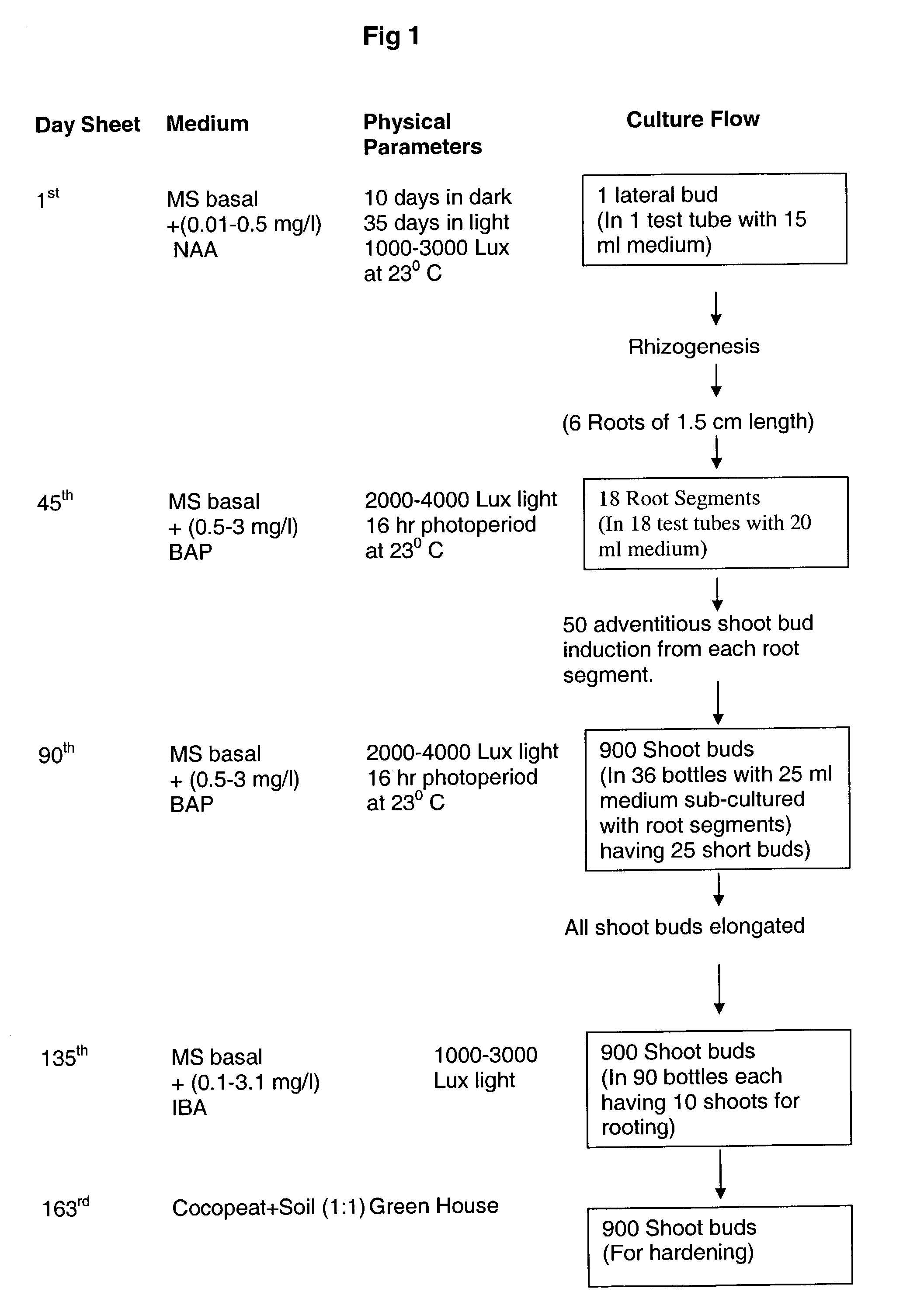Efficient method of in-vitro micropropagation of piper longum
a technology of in-vitro micropropagation and piper longum, which is applied in the field of efficient method of in-vitro micropropagation of piper longum, can solve the problems of not ensuring quality homogenous raw material production, limited number of viable seeds produced by one spike, and poor selection of materials, etc., to achieve short time and space, high frequency of plant multiplication
- Summary
- Abstract
- Description
- Claims
- Application Information
AI Technical Summary
Benefits of technology
Problems solved by technology
Method used
Image
Examples
Embodiment Construction
[0084] Lateral bud (meristematic) explant from any position of young or mature plant of Piper longum were taken and cultured in MS basal medium supplemented with sucrose (2-4%), NAA (0.1-0.5 mg / l) and gelled with agar (0.7-1.2%). These were incubated in dark for 10 days at 23+1.degree. C. and transferred to a light intensity of 1000-3000 lux for 16 Hrs. followed by 8 Hrs. dark period resulting into rhizogenesis, producing 6-7 root like organs, by direct organogenosis from meristematic tissues of lateral buds, which grew up to 1.5 cm in length by 45th day of isolation.
[0085] The rhizogenic tissues were cut to 0.5 cm long segments with cytokinin BAP (0.5-3 mg / L) and solidified with agar (0.7-1.2%) resulting in adventitious shoot bud formation from all the root segments occurred on the same nutrient medium under similar physical conditions (2000-4000) lux light for 16 Hrs. followed by 8 Hrs. dark at 23+1.degree. C.), the shoot buds elongated.
[0086] All separated shoots were responsive ...
PUM
| Property | Measurement | Unit |
|---|---|---|
| size | aaaaa | aaaaa |
| temperature | aaaaa | aaaaa |
| temperature | aaaaa | aaaaa |
Abstract
Description
Claims
Application Information
 Login to View More
Login to View More - R&D
- Intellectual Property
- Life Sciences
- Materials
- Tech Scout
- Unparalleled Data Quality
- Higher Quality Content
- 60% Fewer Hallucinations
Browse by: Latest US Patents, China's latest patents, Technical Efficacy Thesaurus, Application Domain, Technology Topic, Popular Technical Reports.
© 2025 PatSnap. All rights reserved.Legal|Privacy policy|Modern Slavery Act Transparency Statement|Sitemap|About US| Contact US: help@patsnap.com



